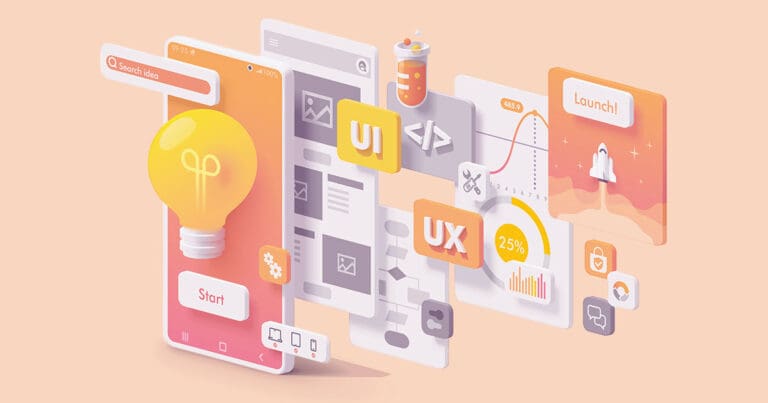The Rise of Design in Healthcare and Its Benefits

The Healthcare Industry is witnessing a major shift, placing high importance on design and user experience.
As healthcare systems strive to improve patient outcomes and engagement, digital design, and user experience have become important components in shaping the future of healthcare services.
The role of design in healthcare
Design now plays an integral role in healthcare including patient experience, medical device sales, and helping healthcare organizations to define a unique brand identity.
- Patient experience
- Medical device sales
- Digital health applications
- Defining a unique brand identity
- Telehealth user experience
Patient experience
The patient experience is significantly enhanced through thoughtful design interventions in healthcare facilities.
Designing spaces that prioritize comfort, aesthetics, and ease of navigation fosters a positive and reassuring atmosphere for patients during their medical journey.
Medical device sales
Incorporating user-centered design in medical device development can lead to more intuitive and user-friendly products.
By focusing on patient needs and preferences, the design can contribute to higher adoption rates and increased sales.
Digital health applications
Digital health applications that are well-designed provide a seamless user experience, encouraging patients to engage with their health and wellness more actively.
Insightful interfaces, clear navigation, and interactive features can motivate individuals to adopt and adhere to these applications.
Defining a unique brand identity
Creating a diverse brand identity is essential for healthcare providers and organizations.
A well-designed brand identity creates trust, communicates the values of the institution, and differentiates it from competitors in a competitive healthcare market.
Telehealth user experience
Designing user-friendly telehealth platforms ensures that patients can easily access virtual healthcare services.
A streamlined user experience enhances convenience and encourages wider adoption of telehealth, benefiting both patients and healthcare providers.
Benefits of a design team in healthcare
There are a number of benefits of leveraging an effective design team in healthcare that include improved patient experience, efficiency and effectiveness, increased awareness, and improved accessibility.
Improved patient experience
Design-driven healthcare facilities and services contribute to a more positive and satisfying patient experience.
Leading to better patient outcomes and increased patient loyalty.
Efficiency and effectiveness
Design teams can streamline processes and workflows within healthcare organizations, leading to improved efficiency and effectiveness of care delivery.
Optimized systems and interfaces enable healthcare professionals to focus more on patient care.
Increased awareness
When tieing design into health communication and marketing efforts, this can increase the impact and reach of public health campaigns, promoting health awareness and preventive measures in the community.
Improved accessibility
Designing healthcare solutions with accessibility in mind ensures that they are usable by individuals with diverse needs and abilities, improving healthcare inclusivity and reaching a larger patient demographic.
Better patient personalization
Through user research and data analysis, design teams can develop personalized healthcare experiences tailored to individual patient preferences, promoting patient engagement and adherence to treatment plans.
Challenges of integrating design in healthcare
There are a few challenges to integrating design in healthcare including finding the right candidates, resistance to change, interdisciplinary collaboration, and limited resources.
Finding the right candidates
Recruiting designers with a strong understanding of healthcare complexities can be challenging.
It requires a balance of design expertise and a deep understanding of the unique challenges and regulations within the healthcare industry.
Resistance to change
The traditional healthcare system might resist incorporating design-driven changes due to established practices and bureaucracy.
Convincing stakeholders and decision-makers to embrace a design-oriented approach may require persistent advocacy.
Interdisciplinary collaboration
Integrating design into healthcare requires collaboration between designers, healthcare professionals, administrators, and technologists.
Ensuring effective interdisciplinary communication and cooperation can be demanding.
Limited resources
Healthcare institutions often operate under budget constraints, making it challenging to allocate resources to design initiatives.
Prioritizing design efforts and showcasing their value can help overcome this limitation.
The future of design in healthcare
Design’s growing importance in healthcare is set to continue as patient-centricity and user experience become primary in the industry.
With technology continuing to advance and increasing focus on preventive care, the design will play a pivotal role in shaping the future of healthcare, transforming how patients access and experience medical services.
Shining light on design principles will lead to more efficient, accessible, and patient-centered healthcare solutions, ultimately improving overall health outcomes and quality of life.
Looking to hire top-tier Tech, Digital Marketing, or Creative Talent? We can help.
Every year, Mondo helps to fill over 2,000 open positions nationwide.
More articles about hiring and industry trends:
- How Data & Analytics Can Improve Customer Experience: Tips & Strategies
- The Costly Consequences of Project Delays and How To Prevent Them
- Workforce Trends to Expect in the Second Half of 2023
- Adobe XD May Be Discontinued: What This Means for Creatives & Employers
- How to Build Employee Engagement in a Remote Workforce
- Google Analytics 4: What Your Organization Needs To Prepare
- Big Tech Job Cuts Don’t Mean Demand for Tech Professionals Is Over
- Benefits of Digital Transformation in Healthcare with Examples
- HR Technology in Hiring: Streamlining Your Recruitment & Onboarding



